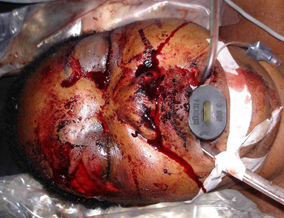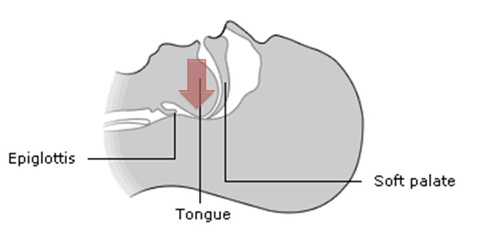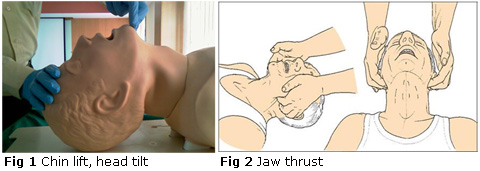Obstructed Airway
An obstructed airway quickly results in hypoxic cardiac arrest.
Problems include:
Identifying the obstructed airway
 The airway may be visibly at risk, for example the patient
with facial trauma or facial burns
The airway may be visibly at risk, for example the patient
with facial trauma or facial burns- Abnormal see-saw movements of the chest and abdomen indicate airway obstruction
- The airway may be noisy (stridor, gurgling, snoring or crowing noises)
- Airflow (felt with the cheek or hand) may be reduced
Causes of an obstructed airway
- Causes of airway obstruction include blood, vomit, malignancy, swelling or inhaled foreign bodies
- Infection (croup or epiglottitis) may also lead to airway obstruction
- Burns may result in laryngeal oedema and airway obstruction
- In the unconscious patient, the tongue may fall onto the posterior pharynx, causing obstruction

Opening the airway
Simple manoeuvres to open the obstructed airway include chin lift, head tilt (Fig 1) and jaw thrust (Fig 2). Suction may be required to clear the airway of secretions.
